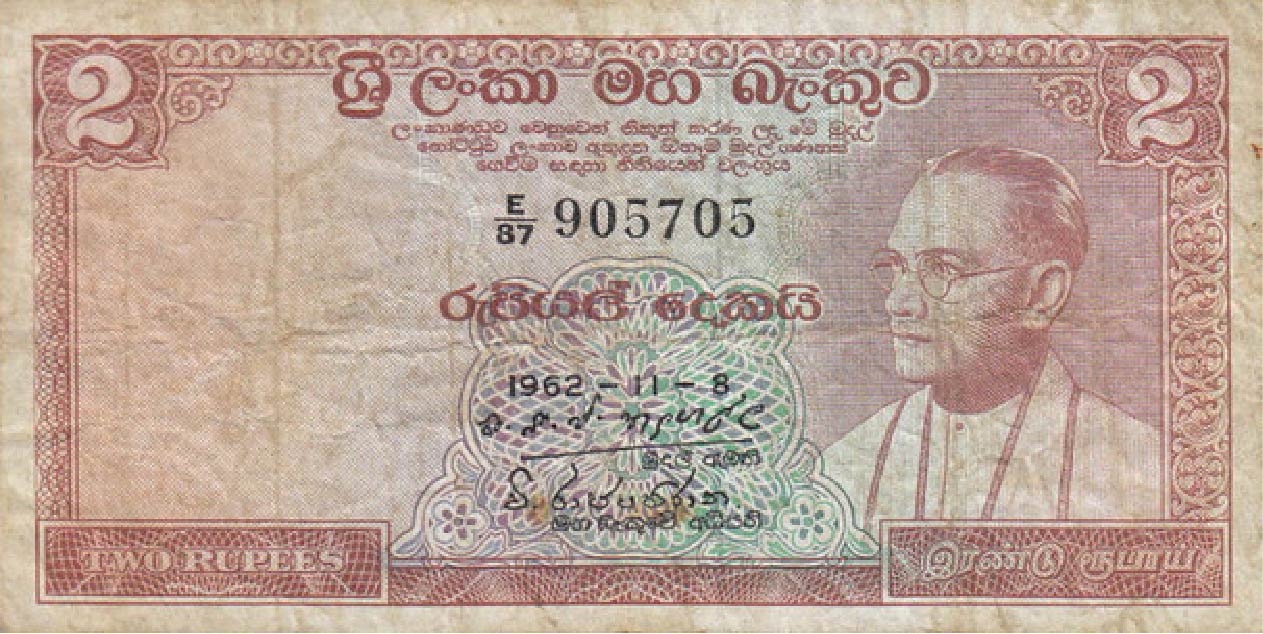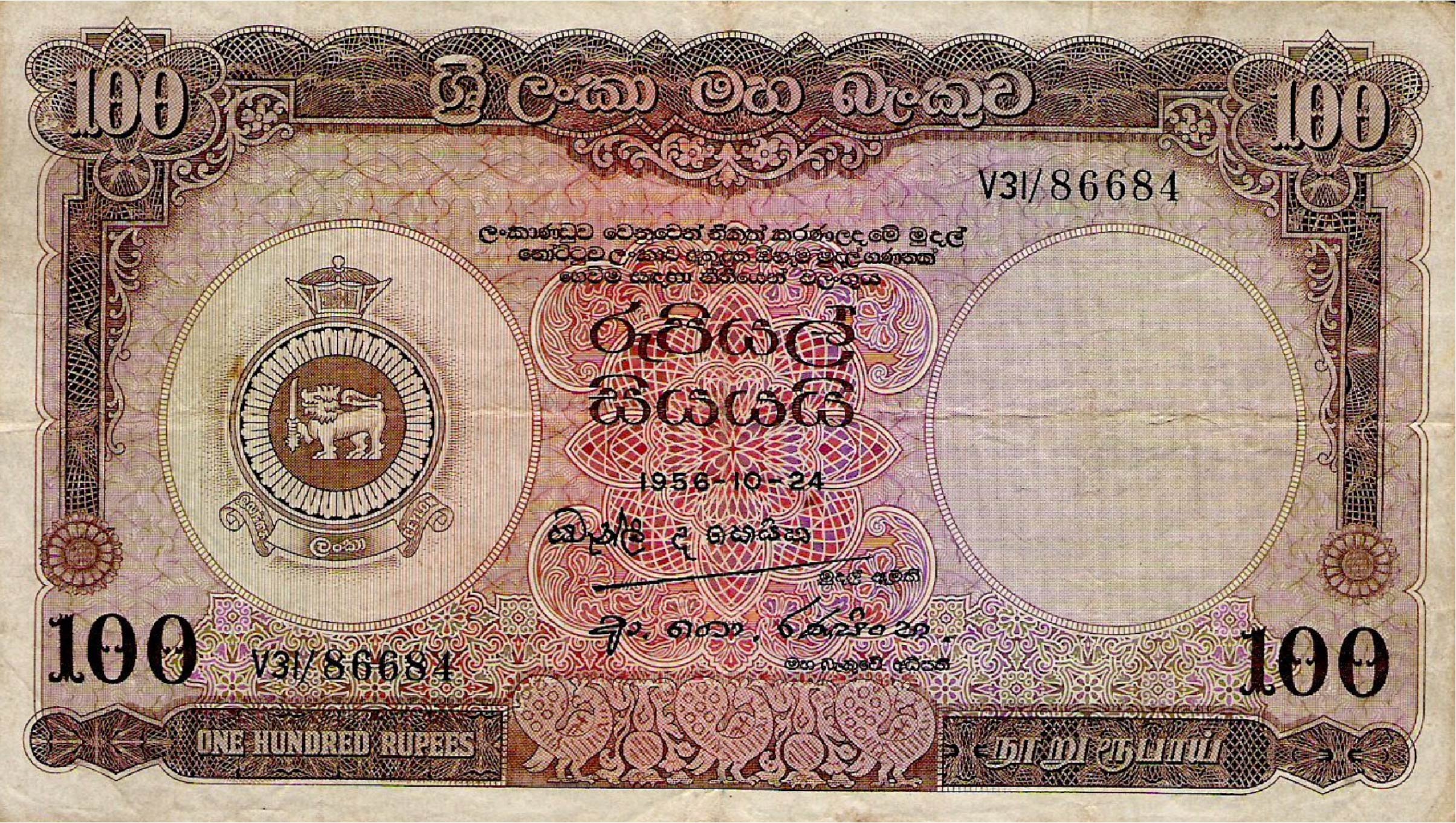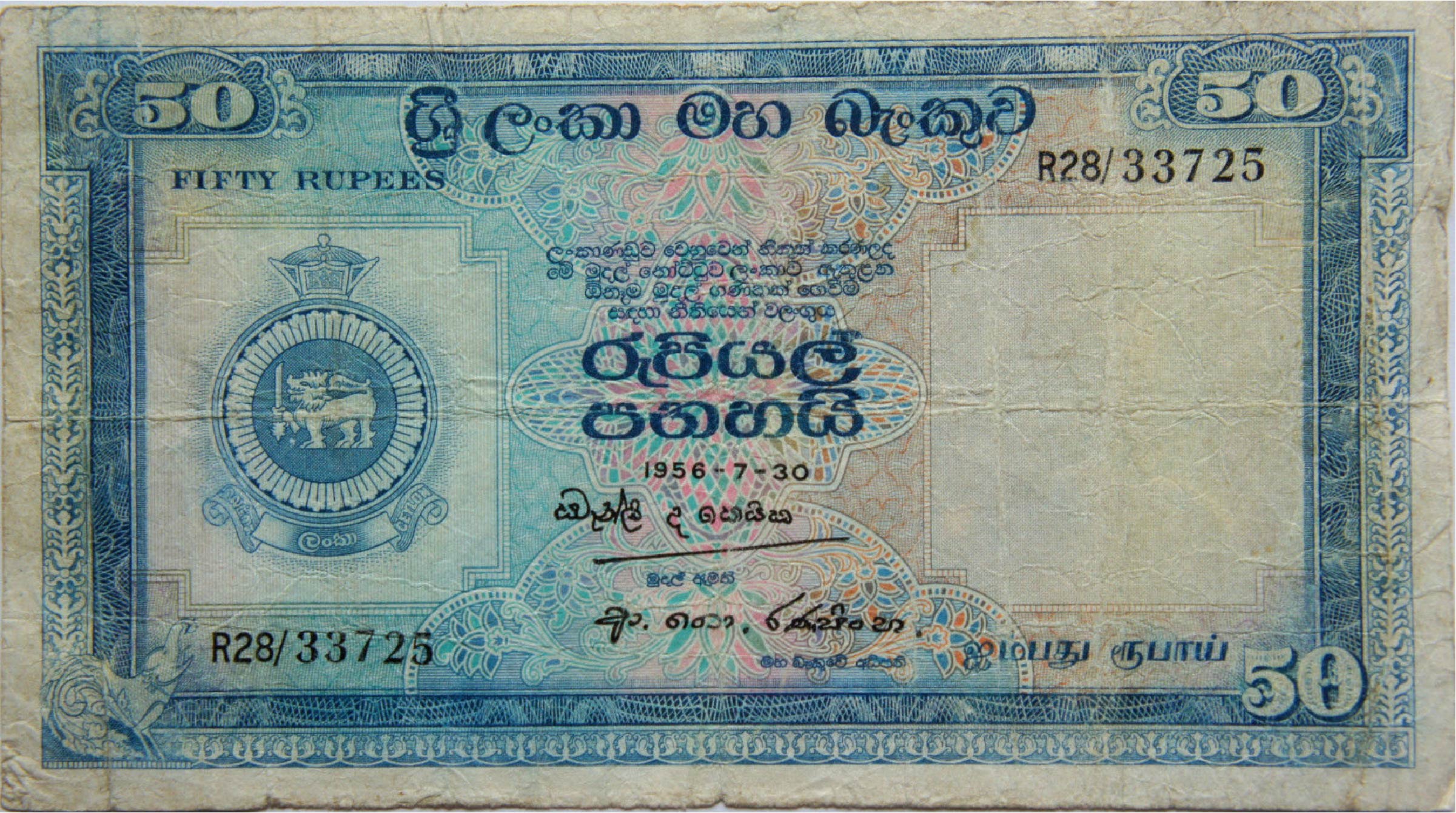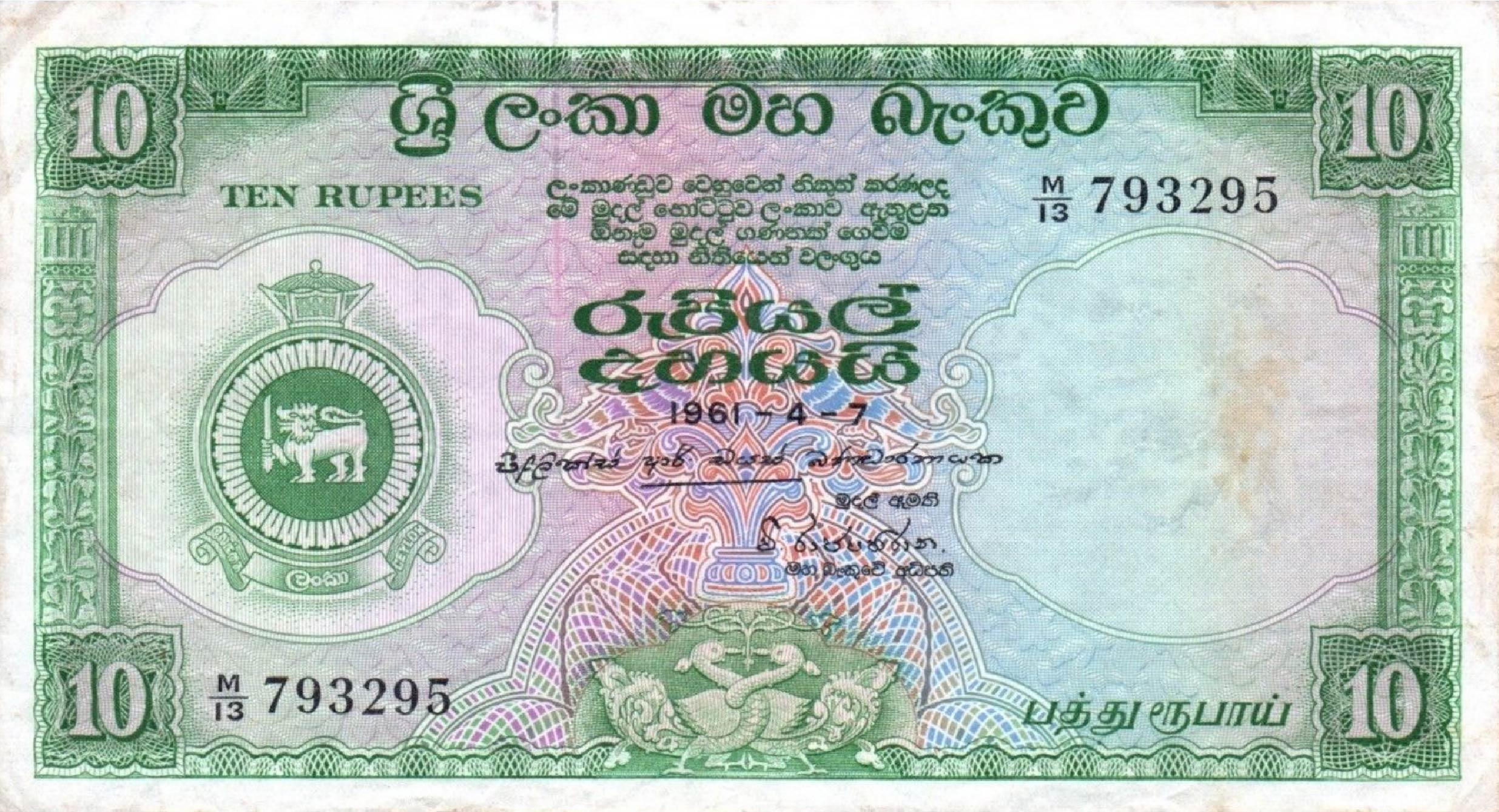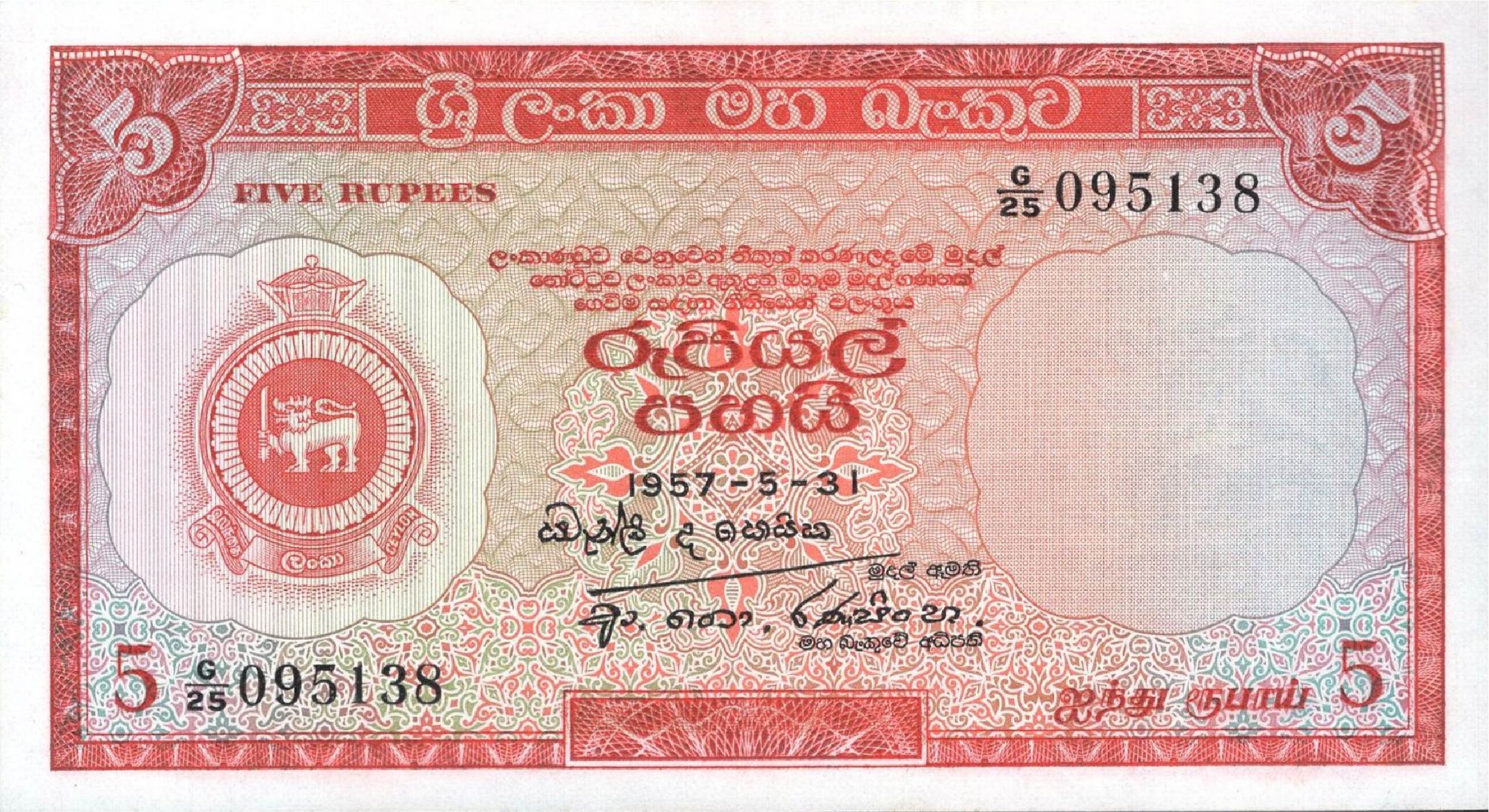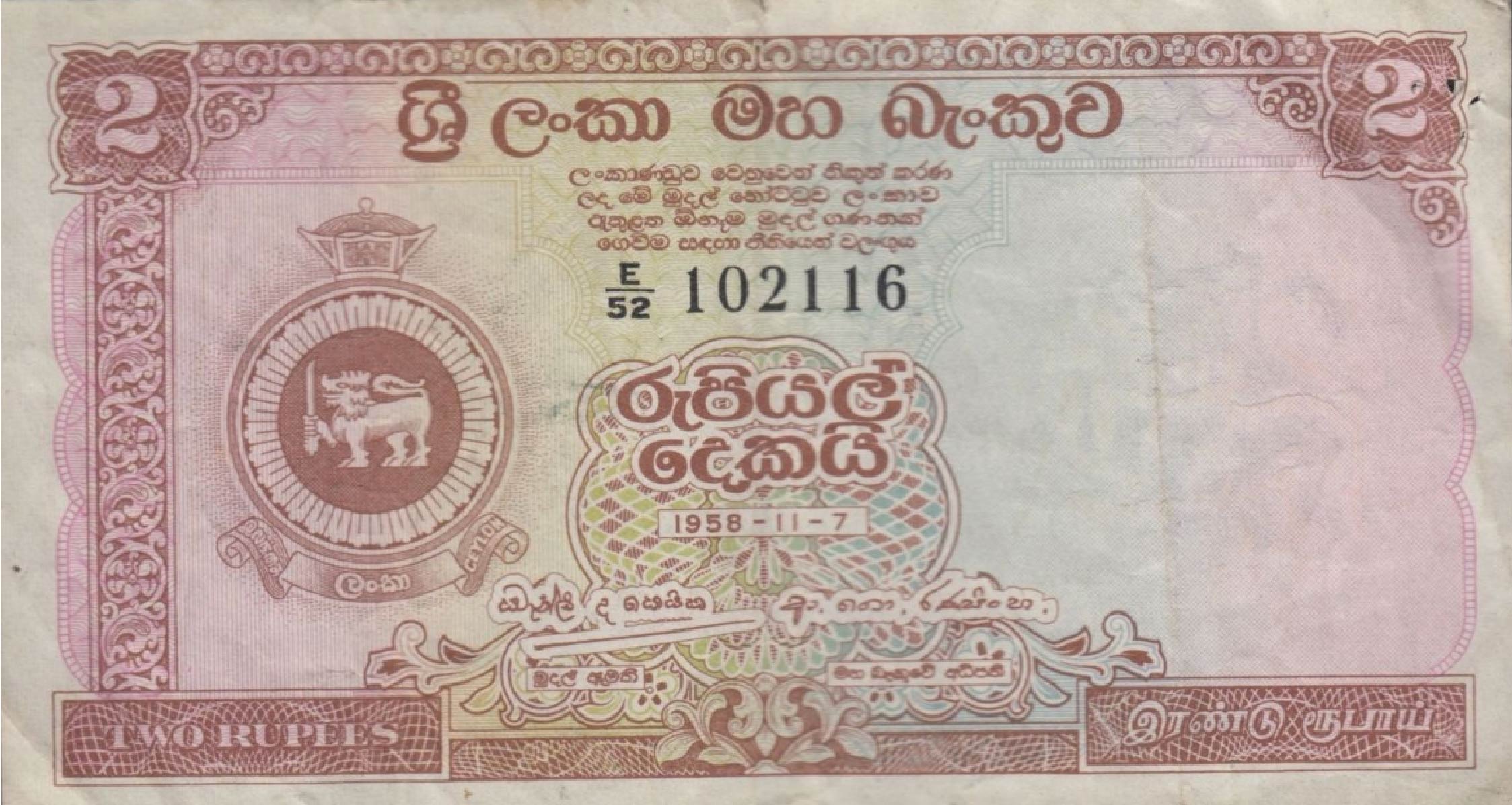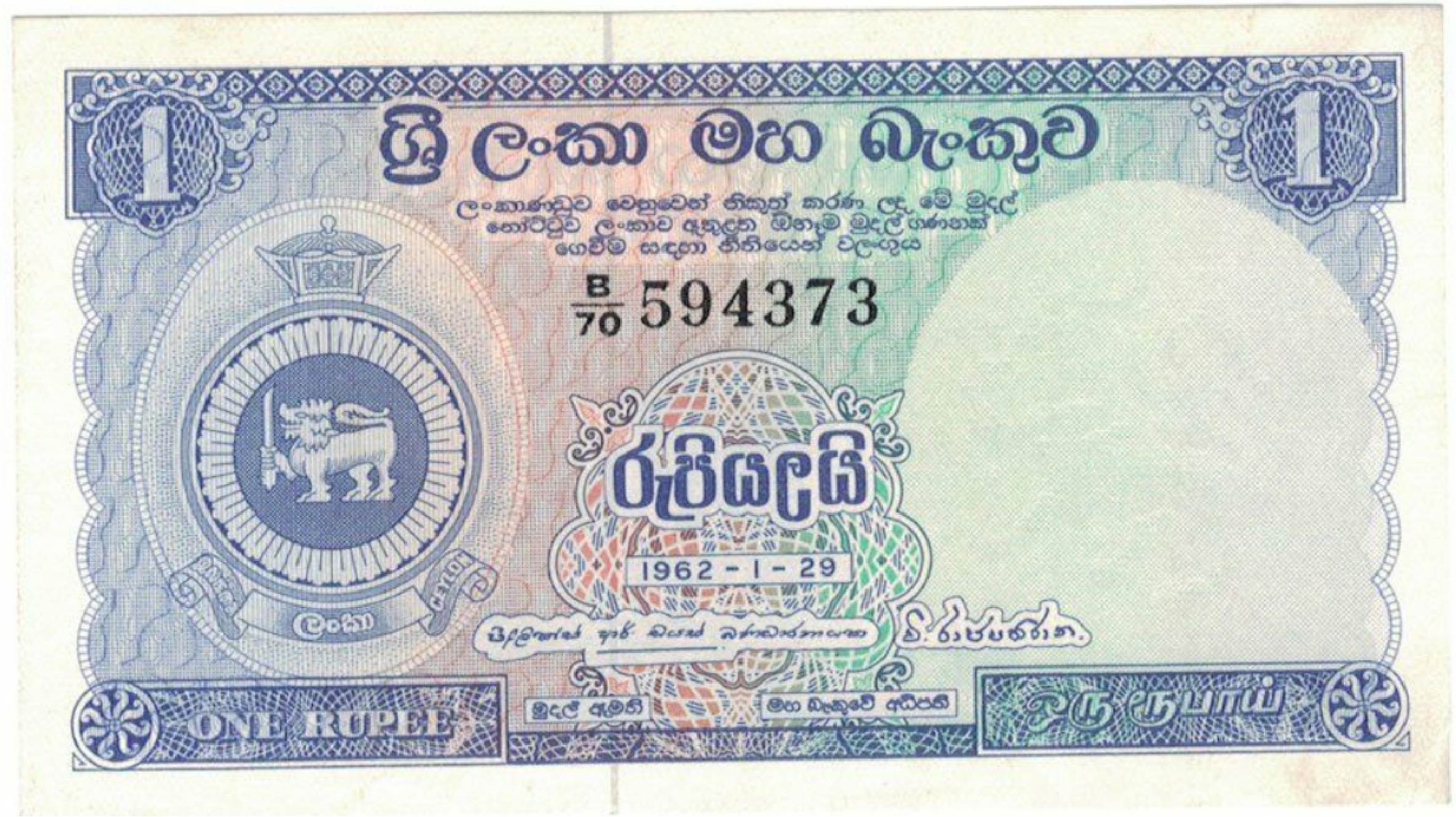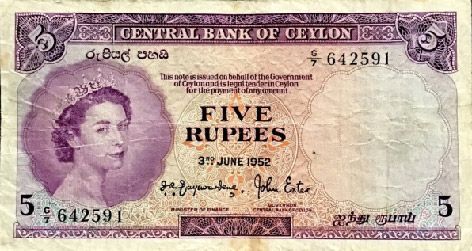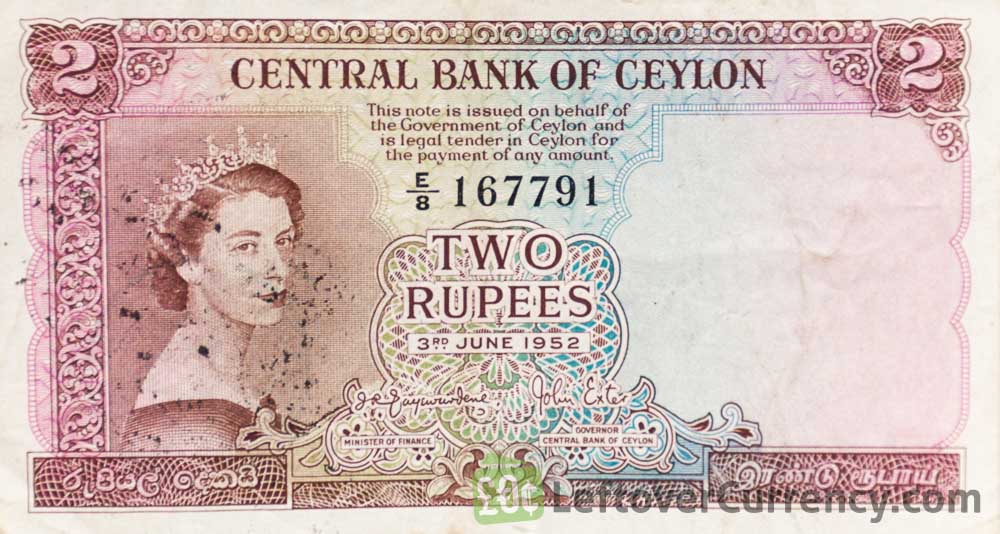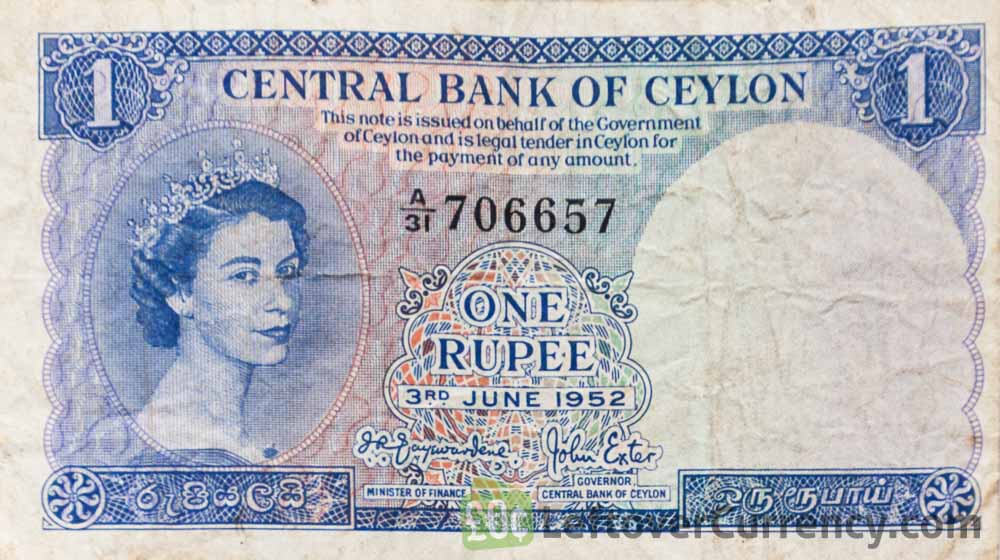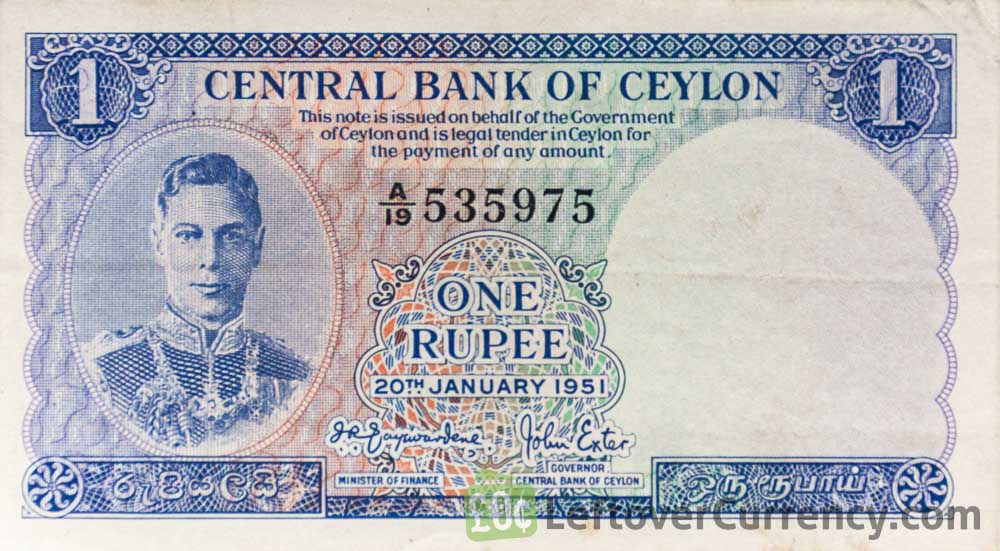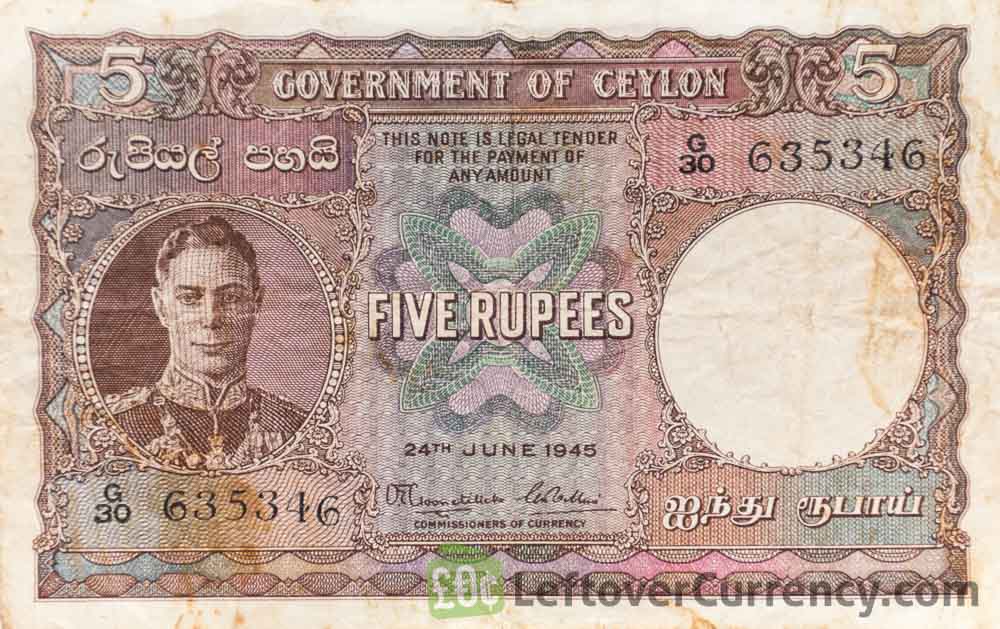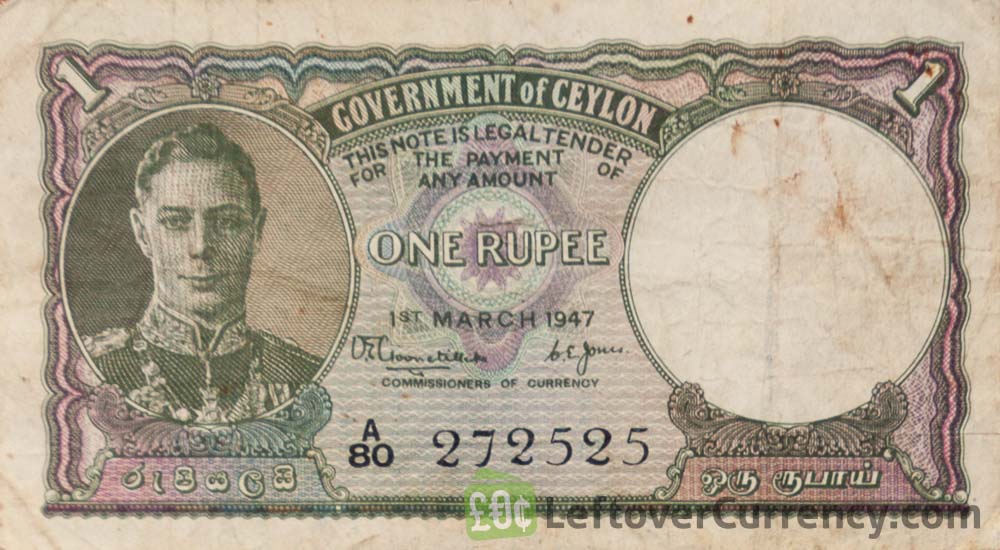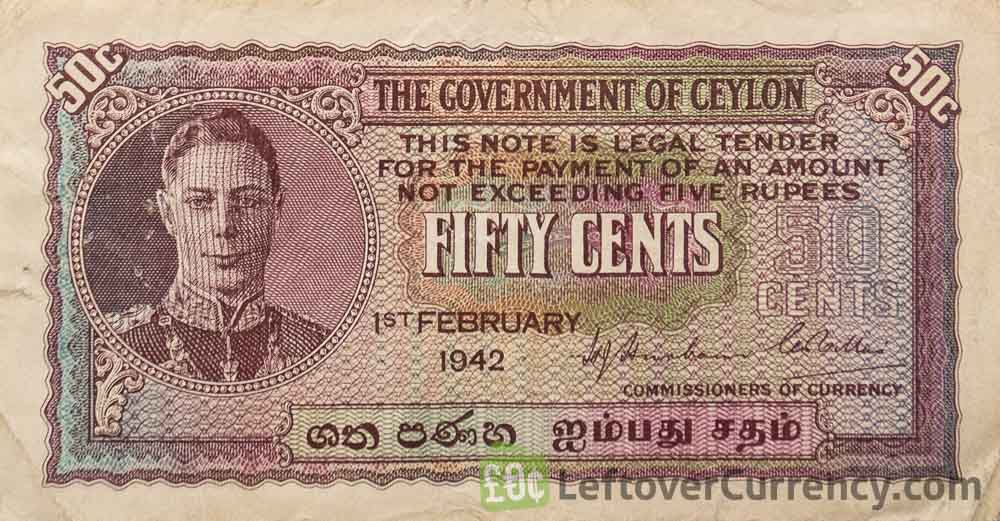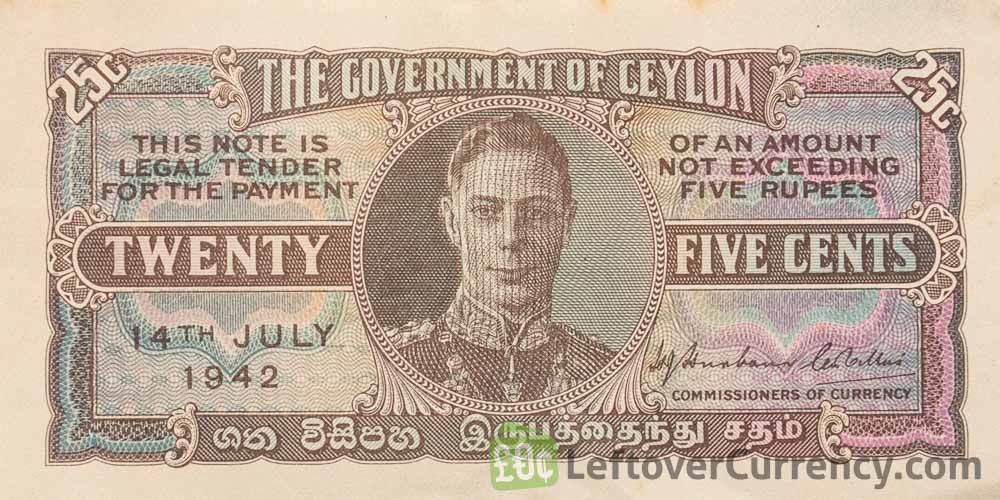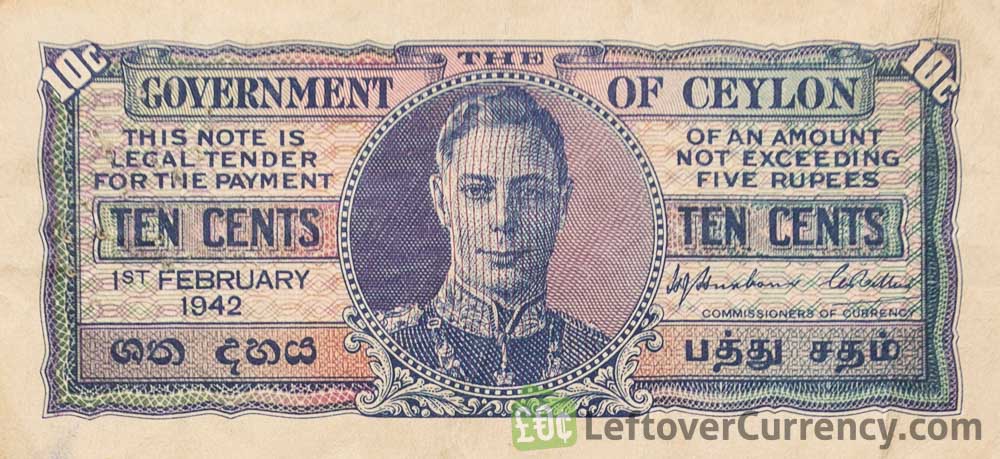Sri Lanka
Showing 49–64 of 64 results
-
2 rupees Central Bank of Ceylon banknote (S.W.R.D. Bandaranaike portrait series)
Text on this 2 rupees banknote is in Sinhala and English, reading ‘two rupees’ in English and ‘Central Bank of Ceylon’ in Sinhala. The portrait on this Rs2 banknote is that of S.W.R.D. Bandaranaike, Prime Minister and founder of the Sri Lanka Freedom Party.You get: £0.003141 LKR = £0.0015700000 -
100 rupees Central Bank of Ceylon banknote (Armorial Ensign series)
The armorial ensign on this old brown-coloured 100 rupees bill from Ceylon is on the left hand side on the front. The fresco in the ancient rock fortress of Sigiriya is featured on the back side, showing two women with traditional jewelry, and a flower basket.You get: £0.157001 LKR = £0.0015700000 -
50 rupees Central Bank of Ceylon banknote (Armorial Ensign series)
The violet and blue coloured bill of 50 rupees has the Ceylonese Armorial Ensign on the left hand side of the front. The back side shows the moonstone and stairway of the Queens Pavilion in Anuradhapura.You get: £0.078501 LKR = £0.0015700000 -
10 rupees Central Bank of Ceylon banknote (Armorial Ensign series)
A lion holding a sword, the heraldic symbol also featured on the flag of Sri Lanka, is shown on the front side of this green-coloured ten rupees bill from Ceylon. The lion is the symbol of the Sinhalese people, the native people of Sri Lanka.You get: £0.015701 LKR = £0.0015700000 -
5 rupees Central Bank of Ceylon banknote (Armorial Ensign series)
The bright red and orange coloured banknote of five rupees shows the lion with sword, symbol of the Sinhalese people, on the front side. The design is the armorial ensign of Ceylon and later Sri Lanka. On the back side of this old Rs5 bill is the statue of King Parakramabahu the Great.You get: £0.007851 LKR = £0.0015700000 -
2 rupees Central Bank of Ceylon banknote (Armorial Ensign series)
The Sri Lanka Ceylon armorial ensign with a lion holding a sword is featured on this old Rs2 bill. The back of the two rupees banknote shows the circular Buddhist temple of Polonnaruwa, built to hold the Relic of the tooth.You get: £0.003141 LKR = £0.0015700000 -
1 rupee Central Bank of Ceylon banknote (Armorial Ensign series)
The one rupee banknote from Ceylon shows the Armorial Ensign of Ceylon with the lion holding a sword. On the back side of the 1 rupee bill is a stairway in Polonnaruwa, one of the ancient capital cities of Sri Lanka.You get: £0.001571 LKR = £0.0015700000 -
5 rupees banknote Central Bank of Ceylon (Queen Elizabeth II)
The obverse side of this banknote of five rupees from the Central Bank of Ceylon features the portrait of a young Queen Elizabeth II, Head of the Commonwealth and Queen of Ceylon. The reverse side shows a statue of Parākramabāhu I, also known as Parakramabahu the Great, a Sinhala king of Polonnaruwa from 1153 to … ContinuedYou get: £0.007851 LKR = £0.0015700000 -
2 rupees banknote Central Bank of Ceylon (Queen Elizabeth II)
The red-coloured banknote of Two Rupees from the Central Bank of Ceylon has the portrait of Queen Elizabeth II on the obverse side. The reverse side of the old Rs. 2/- bill shows the circular Buddhist temple of Polonnaruwa, built to hold the Relic of the tooth.You get: £0.003141 LKR = £0.0015700000 -
1 rupee banknote Central Bank of Ceylon (Queen Elizabeth II)
On this banknote of one rupee from the Central Bank of Ceylon is a portrait of a young Queen Elizabeth II, looking sideways over her right shoulder. The revers side features an ornamental stairway in the ancient Ceylonese city of Polonnaruwa.You get: £0.001571 LKR = £0.0015700000 -
5 rupees banknote Government of Ceylon (King George VI)
This brick-coloured banknote of five rupees from the Government of Ceylon has the portrait of King George VI on the obverse side. The reverse side of the Rs. 5/- bill shows Thuparamaya, the oldest Buddhist temple in Sri Lanka.You get: £0.007851 LKR = £0.0015700000

 Loading
Loading
 Filter
Filter
